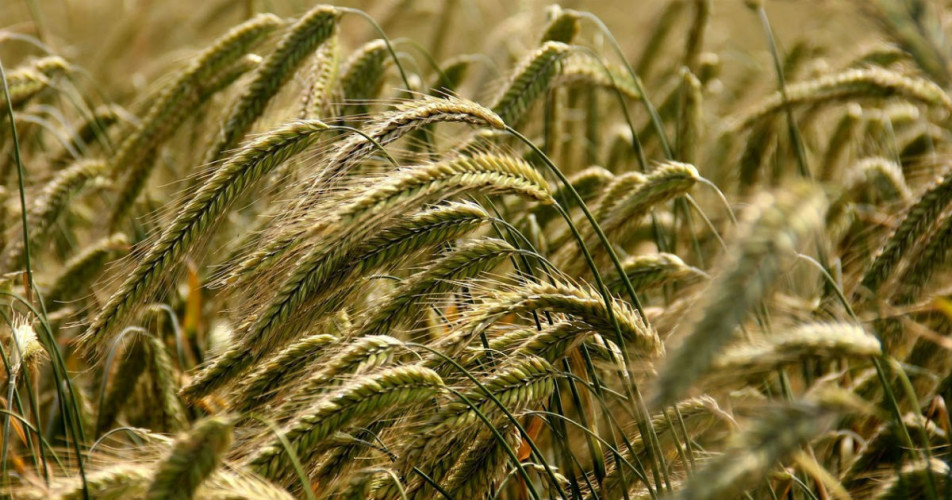
There have been greater claims that the high temperatures and high carbon dioxide levels would result in crop damage, having low yields and less nutritional values. However, studies have claimed some different theory.
“More heat and more carbon dioxide may not hinder quantity or nutritional values of crops,” study says.
By 2050, population is expected to reach 10 billion. Thus, researchers are working out on finding new ideas and paths to provide food to this ever growing population.
As of now, it is difficult to chalk out how crops will get affected due to future environmental conditions. Researchers are trying to find out how growing plants react in greenhouses. Because how plants behave in greenhouse is different form how they behave in open conditions.
Thus, they are trying to work out strategy that combines both traditional farming and experimental methods that take into consideration future growing conditions.
The study draws comparison between level of carbon dioxide in the air and its effect on nutritional qualities of crop.
High temperatures and CO2 levels
There have been several experiments that examine the impact of rising carbon dioxide and warm temperatures on the growth of the crop.
One of the experiments take into consideration experimental warming, where plants were exposed to elevated CO2. Taking future conditions into consideration, current temperatures were increased by 3.5℃.Results showed that yield decreased when plants grew in future conditions.
Just like yield, quality of crops is also an important factor. Quality is the measure of mineral nutrition concentration necessary to meet human health standards. On one hand, where rising CO2 reduced the nutrition quality of crops, on the other hand, warm temperatures proved beneficial for two main minerals required by human body. These are zinc and iron.
Thus, studies proved that high temperatures could lead to less yields. On the other hand, it result in higher quality of crops.
Future conditions
A detailed research has been carried out that defines relationship between growth of the plant and exposure to rising carbon dioxide.
An experiment was done to test how plants will respond to future carbon dioxide levels by adding a pinch of pure carbon dioxide.
Moreover, infrared heaters were used to expose crops to the temperatures as predicted in 2050.
The experiment was done to jot down the ways by which both the factors could be worked out simultaneously i.e yield quantity as well as quality thereby taking into consideration both CO2 and high temperatures.
Crop Nutrition
However, even after going through so many experiments, the reason for the change in mineral nutritional is less clear than the change as measured in yield forms. This is due to simple phenomenon that plants require carbon dioxide for photosynthesis. That means more carbon dioxide cloud lead to high photosynthesis process and hence more growth. Obviously, if there is a higher growth, then there are chances of higher yields in farms.
On the other hand, higher temperatures may lead to lower yields. This is because, high temperature lowers the process of photosynthesis. Also warm temperatures could hinder the reproductive organs of the plant.
Moreover, the higher content of photosynthesis in high exposure to carbon dioxide may cause more carbohydrates to dilute the mineral nutrients of the seeds of plants. This would result in lower concentration of minerals.
Further, when plants grown in high exposure to carbon dioxide levels, they tend to consume less amount of water and that is why minerals such as iron and zinc, grow up the plant because the roots absorb sufficient amount of water.
The similar phenomena could work out with high temperature. Photosynthesis process lowers down, when plants are exposed to high temperatures. This situation results into low production of carbohydrates.
Moreover, the plants that are exposed to high temperatures get the touch of lower humidity. As a result, plants consume more water from the soil then.
Upcoming strategies
Thus, we need to establish a mechanism that trades off between maintaining temperature and CO2 levels.
A few experiments have been done in this way. For instance, if constant water level is maintained, then even changing the CO2 levels or temperature fluctuations should result in nutritional quality to remain intact at the same levels.
In regard to this experiment, researchers are working out to develop a system that would control the humidity levels.
Earlier a prototype of an in-field air humidifying system was developed. However, the system lacked something and there were some loopholes which need to be corrected, reports say. Also, it is not yet confirmed weather this theory would be applicable only to a particular crop, or all the crops.
Image Credits – Pinterest
Any information taken from here should be credited to Skymet Weather


